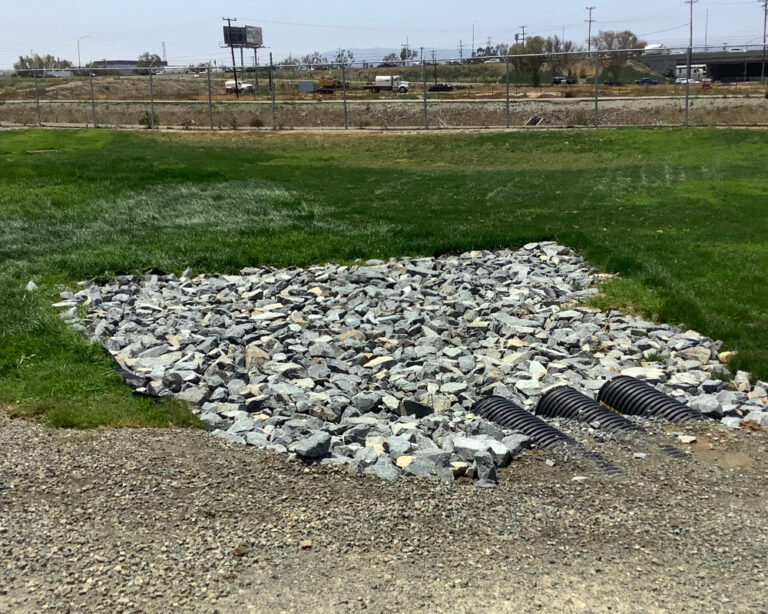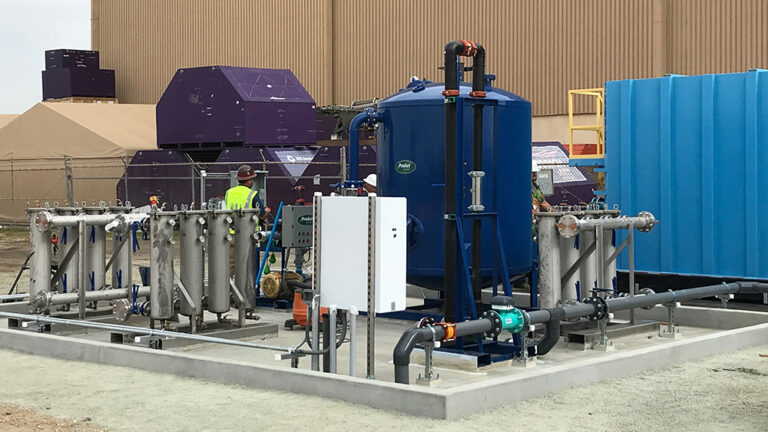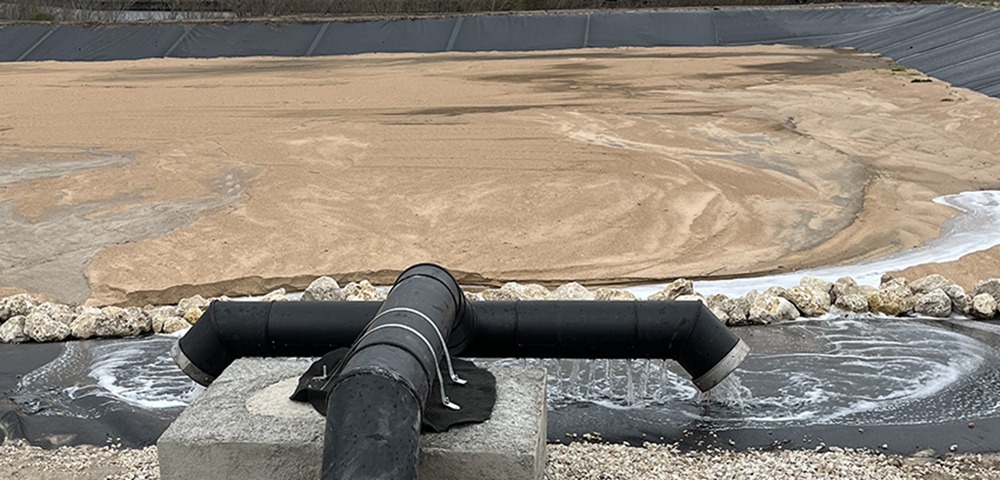Operators of any facility, in any location, can encounter elevated levels of lead, cadmium, other metals, solids, or other contaminants in their stormwater runoff.
This problem naturally worries manufacturers and others that deal with metals or other exposed materials with the potential to contribute pollutants to stormwater. However, even facilities that don’t directly house or process those materials can find their runoff contaminated by pollution from potential nearby sources (runoff from roofs and parking areas, off-site run-on, airborne contaminants, naturally occurring impacts, etc.). And contamination can threaten compliance with an existing National Pollutant Discharge Elimination System permit or future compliance due to evolving regulations while also creating potential health and environmental concerns for nearby communities.
Many pre-engineered treatment solutions exist to tackle metal and solids contamination, from filtration systems that treat runoff to green design elements that reduce stormwater discharges. But proceeding straight to one of those solutions may mean missed opportunities to develop a site-specific remedy that considers all feasible solutions — which may reduce costs and allow the flexibility to meet changing regulations and future site conditions — while potentially limiting operations and maintenance costs.
Environmental managers should evaluate their site holistically before deciding how to resolve this issue. By considering all factors when the problem first arises, they can find a treatment approach that not only brings the site into compliance and provides safeguards for nearby communities in the present but also allows for responsive contamination management over the long term.
Where to start: Understand the problem
Before attempting to reduce levels of metals or other solids in stormwater runoff, it is crucial to understand the contours of the problem at the site. Seeking answers to the following questions can help create a clear picture:
- What is the source of the pollution? Some businesses already know the answer: Their operations produce pollutants as inevitable byproducts; therefore, they must find a way to contain and/or treat the pollutants and impacted runoff. But for other businesses, the answer will open more options for fixing the problem. For example, we counseled a California business that detected elevated levels of zinc in its runoff. After an investigation, we determined that the metal came from the facility’s zinc roofs. By identifying the source, the business opened the door for a less expensive and easier-to-implement solution, preventing the residue from entering runoff by treating the roofs and treating runoff from the roofs instead of the whole site’s stormwater.
- How does water enter and drain from your site? Many factors related to both the built environment and the natural environment could impact how pollutants enter your runoff and where that runoff travels. Therefore, these factors should shape the treatment solution you choose. The frequency and intensity of storms, the terrain, the permeability of the ground, and how much free space is available all matter for understanding and solving the problem.
- Which community and environmental factors need consideration? The site’s location — for example, near a protected natural area versus a dense residential or commercial neighborhood — will shape the mitigation options available. Furthermore, some options will already be standard practice in an area, but regulators and community members will consider other novel or experimental options, which could make the approval process longer and less certain.

Next step: Evaluate solutions
Once a business understands the issues and conditions at its site, it becomes possible to tailor solutions that suit its specific goals and challenges. Three general approaches exist, each with its own set of considerations:
- Capturing and/or reducing stormwater runoff. Many options exist for capturing or reducing runoff: underground infiltration chambers, retention and detention ponds, and permeable pavements.
For example, for a former rocket testing and research facility, we optimized a system that intercepts water before it leaves the site and pumps it back into a central detention pond that allows water to evaporate and infiltrate instead of leaving the site as runoff. For other clients, solutions that encourage increased infiltration, such as tree wells, permeable pavement, and underground chambers, provide runoff reduction.
- Preventing pollution from mingling with runoff. Prevention can often yield the most economical, simplest solutions. Routine maintenance and operational adjustments to keep runoff cleaner prior to discharge, removing an existing source or process that interacts with stormwater, and other approaches can provide relatively easy, low-cost ways to tackle pollution that don’t require complex, expensive engineered systems.
For a textile laundry service in California, for example, we identified the source of contamination as bins with oily textiles kept outside. By providing an enclosure large enough to store all bins during storm events, we were able to reduce the impacts on stormwater, helping the facility maintain compliance.
- Adopting new or improved systems to treat runoff. From ion exchange systems to pump systems to repaving approaches to biofiltration, a wide variety of engineered solutions exist to treat runoff. These options often require an initial capital investment for installation and a commitment to long-term maintenance costs, but they can yield benefits compared to runoff capture and pollution prevention. New systems or improvements to existing systems may be the most effective and cost-efficient and may minimize facility operations adjustments. In one case, we counseled a metals recycling facility with an existing system designed to treat runoff; however, that system was undersized and no longer effective. Instead of replacing the existing system, which would have interrupted site operations, we designed a filter pond that would slow down the flow, allow the existing system to work, and treat the stormwater before it entered the system.
In another example, a client in California had allegedly violated the Clean Water Act by discharging metal-containing stormwater. In this situation, installing a stormwater treatment system made sense because the client wanted to measure removal more routinely to document compliance. We were able to utilize proven technology with low maintenance to intercept stormwater via existing infrastructure before it left the site and discharge the treated stormwater into the existing outfall, thus maintaining compliance. We provided turnkey system design — the first of its kind locally — as well as installation, operation, and maintenance. We also conducted the necessary permitting, retained a vendor to fabricate the system, and hired a subcontractor to install it.

As the examples above illustrate, a full-service consultant like Haley & Aldrich can offer important perspectives when tackling metals or solids in stormwater runoff. Businesses need more than engineering skills to devise an appropriate treatment solution: They need trusted advisors who bring a comprehensive skill set.
Important areas to consider include the following:
- The compliance and regulatory landscape. Businesses can realize the most value and flexibility from their solutions by partnering with a team that understands local, state, and federal requirements, as well as how they are likely to evolve.
- Design-build solutions. A one-team approachcan simplify project delivery and keep costs down.
- Emerging contaminants. Expertise in emerging contaminants like per- and polyfluoroalkyl substances (PFAS) can yield long-term benefits. Regulations surrounding PFAS and other emerging contaminants in stormwater runoff and discharge are changing rapidly, as are treatment options and technology to source and treat them, so working with a partner that understands and tracks the evolving regulations can yield more efficient, adaptable solutions.
Please contact the authors of this article for more information on stormwater engineering and management.
Published: 7/14/2023
- Energy
- Industrial and manufacturing
- Mining
- Contaminated site management
- Emerging contaminants
- PFAS
- Geotechnical engineering
- Water resources
- Stormwater
Authors

Technical Specialist, P.E.

Engineering Design Group Leader, P.E.




